Published on March 3, 2013
At the height of the air war over Vietnam, the USAF and US Navy kill ratios achieved by their pilots in combat were far lower than expected. For the US Navy, it was just 3.7 enemy aircraft shot down for every American plane lost. This was a far cry from much better, historic rates of World War II and the Korean War. Both the USAF and the US Navy recognized that something had to be done to improve the situation — yet what? For the Navy, the analysts determined that their pilots, both in F-8 Crusaders and F-4 Phantoms, were not skilled enough in air combat maneuvering (ACM) and were not as experienced against so-called dissimilar types, i.e., enemy aircraft types, largely Soviet-built MiG-17 “Fresco”.
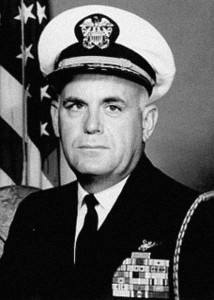
A full scale study revealed the picture with clarity — this was the “Ault Report”, authored by USN Captain Frank Ault, USN, who worked for the Chief of Naval Operations (CNO), Admiral Thomas Moorer, USN. The study’s recommendations were approved by the US Navy and a new program called the “Advanced Fighter Weapons School” was immediately launched. That program would be immediately called “TOPGUN” — from day one.
Surprisingly, however, on the USAF side, a completely opposite conclusion would be reached and, as a result, the USAF would suffer badly for years to come.
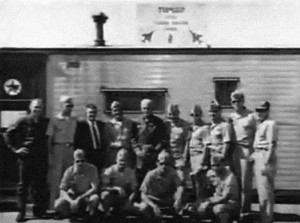
The First TOPGUN
Captain Ault’s recommendations were detailed and complete. He even selected which squadron should run the new program, which aircraft would be used and under which command it should be situated. Thus, within VF-121, its West Coast F-4 Phantom Replacement Air Group, which was tasked with conversion training for F-4 Phantom pilots and flight crew members, would set up the new school and syllabus.
Further, classified projects undertaken at or just prior to the inauguration of TOPGUN known as HAVE DRILL and HAVE DOUGHNUT tested MiG-17 and MiG-21 types against USAF and USN planes and pilots. The results were terrifyingly illuminating. In fact, in every case, the pilots underestimated the MiG-17. The results were shocking, fully 100 percent were “shot down” in the engagements as a result — no exceptions. The extraordinary performance of the MiG-17 below 450 kts and below 10,000 feet was largely unappreciated, pilots were overconfident, and training was thin in understanding the true capabilities of the enemy’s prime dogfighter.
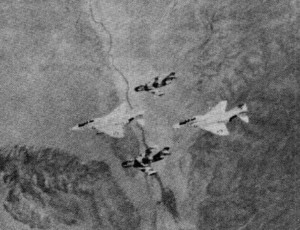
To correct these deficiencies, the TOPGUN program filled the breach. It was initially designed to be four weeks long, though that would later expand. Ground schools and air missions would comprise the bulk of the syllabus. The program would recruit the best pilots from each of the front line Carrier Air Wings to attend. Captain Ault’s findings were critical in regard pilots and how they misused air-to-air missiles.
It turned out that the majority of pilots were unfamiliar with the narrow limitations of the air-to-air missiles and radar systems. As a result, they tended to launch against enemy aircraft from outside the envelops. The TOPGUN school would therefore focus on maneuvering against dissimilar aircraft, bring them within the envelop and simulate firing a missile — and after every flight, it would be carefully evaluated whether the missile was launched within the narrow parameters to achieve success. To do this, they would fly from NAS Miramar and use the US Marine Corps’ missile range at nearby MCAS Yuma.
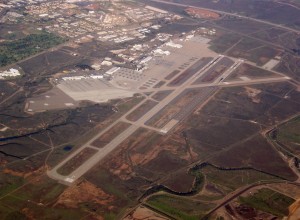
At the end of each TOPGUN class, graduating pilots would return to their squadrons and teach the others the techniques they had learned, thus multiplying the program’s effectiveness across the fleet. Ault’s plan was an expertly designed, multi-layered one. With the polishing touches and the syllabus developed by VF-121, finally, on March 3, 1969 — today in aviation history — the first class arrived to the US Navy’s TOPGUN. At that point, the entire operation was run from a small, cramped trailer that was parked behind the main hangar used by VF-121. From this inauspicious start, however, the program rapidly grew as VF-121 begged, borrowed and “scrounged” the necessary equipment and budgets to achieve the success they envisioned.
Comparing the USN and USAF Experiences
Simultaneous with the launch of the TOPGUN program, the USAF came to a startlingly different interpretation of the data. In the USAF report, the low kill ratio was blamed not on a lack of pilot dogfighting skills, but rather on insufficient technology. The USAF study concluded that most of the enemy’s kills were caused when their aircraft slipped in behind the American aircraft and surprised them in a lightning quick attack. Thus, the pilots’ skills were not to blame, rather the case was made that new technologies were needed to enable early detection. As well, gun pods would be placed in the nose of the F-4 Phantoms, since dogfights were still happening, despite the early promise of the long range air-to-air missile war — yet more training in air-to-air gunnery was not considered important.
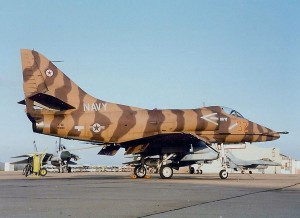
For the remainder of the air war over Vietnam, the US Navy saw its kill ratios steadily and rapidly improve — ultimately achieving 12.5 to 1. With every graduating class from TOPGUN, the skills learned were being integrated into the fleet. Navy pilots were becoming experts at dogfighting the MiG-17 and, by 1972, this included the MiG-21. The US Navy pilots also became systems experts at using their air-to-air missiles, with resulting higher kill rates also for the missiles. When comparing these results with the USAF, the picture became one of stark contrasts.
In fact, on the USAF side, while there were some truly extraordinary individual acts like Col. Robin Olds and Operation Bolo, on the whole the kill ratio did not significantly improve throughout the rest of the Vietnam War. At the worst point, in June and July 1972 when the USAF first encountered significant numbers of MiG-21s, the MiGs enjoyed a serious advantage over the USAF, shooting down nine (9) USAF airplanes for every MiG-21 lost — a complete reversal of expectations!
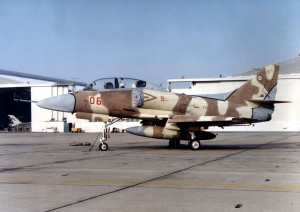
Afterward and into the Modern Age
After the end of the Vietnam War, the USAF did a follow-up study on the kill ratios and air tactics. Among the key findings were that pilots were usually killed within their first ten combat missions; if they could survive that, their chances of surviving an entire tour of 100 missions were very high. Further, it was concluded that the US Navy’s TOPGUN program was teaching a needed skill set that was being lost to time — that of the modern dogfighter.
The result was that in the mid-1970s, the USAF would inaugurate its own program, RED FLAG, in which USAF pilots would follow a similar syllabus and fly their first ten missions in simulated conditions — there, they could be “shot down” in simulations several times and still live to tell the tale, surviving their first “ten missions”. The USAF’s program was also much longer than the US Navy’s, though the latter added more coursework and more flying after the Vietnam War as well, having validated the concept of the program based on wartime experience. Both programs also used dissimilar aircraft types, often painted in odd camouflage patterns, and carefully trained to mimic enemy tactics.
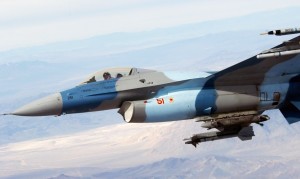
Today’s Programs
Today’s “best of the best” are brought to the US Navy’s TOPGUN and USAF’s RED FLAG programs. Technology may be a key factor in modern air combat, but ultimately, the skills of air combat can only be attained from actual experience in a plane in battle — even if it is simulated battle. As a result of these two programs and the lessons learned that have been applied at all levels through most other training programs, the pilots of the US Navy and USAF remain some of the best in the world. Many NATO pilots and aircrews from other allied nations take advantage of these programs (particularly RED FLAG) and routinely send their pilots over to the USA for advanced ACM training.
At the end of the day, it seems that the old adage that the most important part of every airplane is the pilot is as true today as it was in WWI, WWII, the Korean War and Vietnam. Though most USAF officers are somewhat embarrassed to admit it, the US Navy lead the way in this one area (well, at least this once…).
Today’s Aviation Trivia Question
Do the Chinese and Russians also have their own equivalent programs to TOPGUN and RED FLAG? If so, what are they called and how do they work?

Don’t forget about Col. John Boyd, USAF. He came to these conclusions also, and quantified the results in the form of charts and graphs (Energy-Maneuvering, or E-M) that made it apparent that US technology lagged far behind the Soviets. He was an advocate of basic dogfighting skills and was by all accounts an excellent dogfighter himself. If I remember correctly his nickname was “Sixty-second Boyd”, meaning he could get on your tail in sixty-seconds or less. He and his collegues are the reason we have F-16s and F-15s.
Check out “Boyd” by Robert Coram and “Mind of War” by Grant Hammond, both are excellent books and touch on today’s topic.
“Sixty Second Boyd” actually refers to a bet made by John Boyd himself. He would take on challengers to a sixty-second dogfight, hence the name. If Boyd could get behind you in less than 60 seconds, you lost five bucks as the bet. Reportedly, he did that while flying an F-100 Super Sabre.